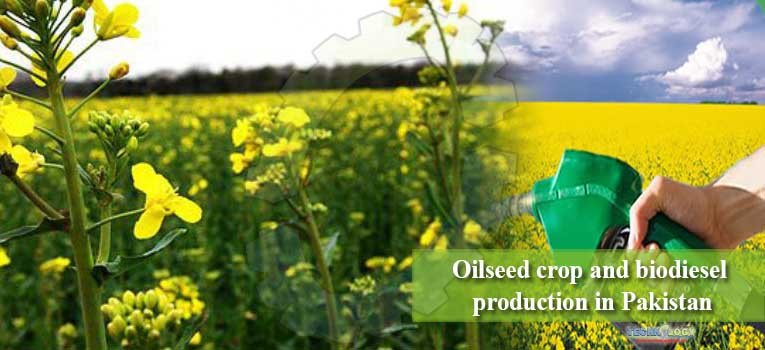Oilseed Crop and Biodiesel in Pakistan: In recent Era, energy is the most critical thing. Many of developing countries (Pakistan) are facing sever energy crises.
 Here in our surroundings different kind of material is present which is can be serve as biodiesel feedstock like oilseed crops, algae, restaurants waste and animal waste. Biodiesel can be produced by wide range of oilseed crops.
Here in our surroundings different kind of material is present which is can be serve as biodiesel feedstock like oilseed crops, algae, restaurants waste and animal waste. Biodiesel can be produced by wide range of oilseed crops.
Edible oil is one of the important commodities of everyday use. Pakistan has been constantly and chronically deficient in its production. About 70% of the domestic requirements are met through imports.
Since early 1970s its import increased at the rate of 12.5% annually and the trend will further not only continue but will also get worsen with increase in population
SOYBEAN
Soybean crop is not appreciated in Pakistan due to different reasons. But this crop produces approximately 1.5 gallons of oil per bushel. In 2009 record breaking yield of 44 bushels per acre are produced in USA.This turn to an oil yield of 66 gallons per acre. Soybean oil is a co-product with soybean meal which is used as feed for animals.
RAPESEED AND CANOLA
Rapeseed and canola can produced about 75-240 gallons of oil per acre. They are excellent crops for rotation because they have deep root system. This extensive root system scavenges the nutrient and water efficiently.
MUSTARD
Mustard is a relative of rapeseed and canola, has also been shown to be an excellent cover crop with high potential as a biodiesel feedstock. Although mustard produces less oil than canola, it is drought tolerant plant;it can grow well on marginal soils and contain special compounds that act as a natural fumigants against soil pathogens.
CAMELLIA
Camelina is a relative of mustard and rapeseed. Camelina can possibly be grown at a lower cost compared to rapeseed because it does not need as abundant fertilizer or pesticides.
SAFFLOWER AND SUNFLOWER
Safflower and sunflower both produce oil that can be used for biodiesel, although these oils tend to be more highly prized as premium cooking oils.
OTHER WARM CLIMATE FEEDSTOCK
Tropical oilseed trees such as oil palm and coconut are used as biodiesel feedstocks in some parts of the world. Other warm climate feedstocks, such as jatropha, croton, candlenut, and tallow tree, are also being researched as biodiesel feedstocks.
In most cases, these plants grow wild and are well adapted to their environments. However, they have yet to be domesticated, so little information is available about diseases and insect pests that could cause problems when plants are grown in high density.
CASTOR BEAN
A major constraint for using castor oil as a feedstock for biodiesel is the high price castor oil commands as an industrial and pharmaceutical feedstock. Castor oil boasts high lubricity characteristics,
So biodiesel derived from castor oil could achieve the required lubricity for biodiesel standards at concentrations much lower than that of rapeseed (Brassica napus L.) or soybean (Glycine max L.). However, castor oil’s high viscosity may limit its use to lower percentages in biodiesel blends or to warm climates.
POTENTIAL OILSEED CROPS
In addition to the main oilseed crops listed above, several plants are currently being researched as biodiesel feedstocks. Lesquerella and pennycress, both relatives of mustard, show promise as oilseed crops.
Hazelnuts could prove to be a cost-effective, productive new biodiesel feedstock, if current disease problems can be overcome. The tree is adapted to less productive soil and produces a high quantity of oil about 90 gallons per acre.
OPTIONS FOR INCREASED OILSEED PRODUCTION
- Replacement of production area under traditional mustard varieties with Canola.
- Inter-cropping of canola with sugarcane and in the orchards.
- Cultivate the sunflower after rice and cotton crops in Sindh and Punjab.
- Exploring the virgin lands, bella lands, Spat and khuskhaba lands for oil seed crops planting.
- Development of high yielding canola hybrids which highly responsive to the inputs.
- Encourage the farmers and local private sector for quality oilseed production by giving some kind of incentive.
- Attractive support price.
- Introduce suitable crops in the rotations to increase total production of oil ultimately the production of biodiesel.